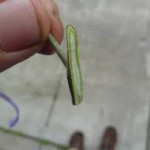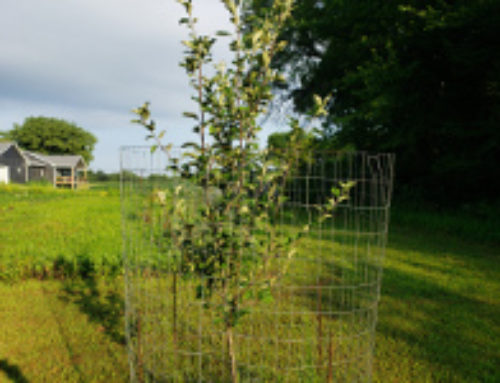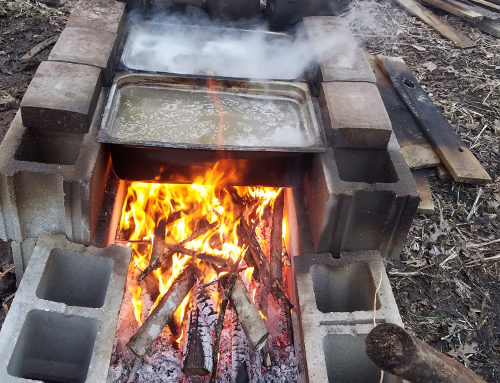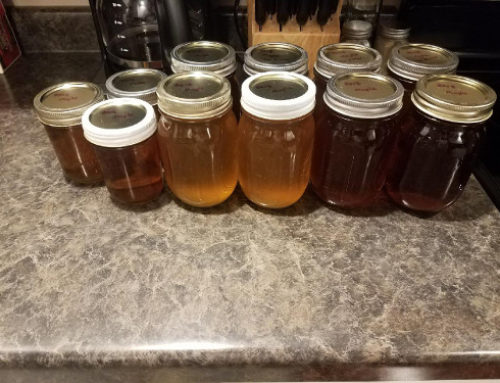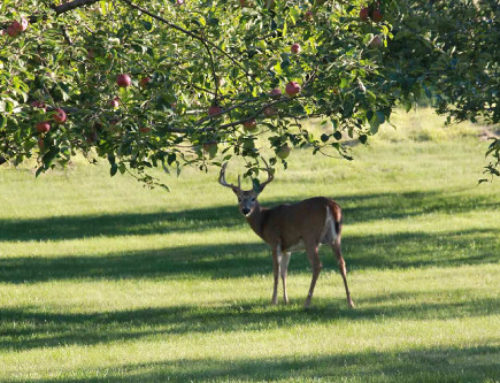The Best Grafts For Plants & Fruit Trees
There are several grafting techniques that one can choose to use, but which are the best and why?
Firsts we must decided what the “Best” means, as there are many variables to consider such as the plant, tree, root-stock, age, and size of stock we are grafting to.
Here we will focus on four main grafts that 98% of us would use; Bud Graft, Cleft Graft, Whip & Tongue Graft, and the Bark Graft.
The Bud Graft
The Bud Graft is a grafting technique the uses the newly formed bud from a new Scion. The bud is located under the leaf and is taken between the Summer period of July 15 to August 15. This Bud is then placed on a small plant or a new Root-stock. Since the Bud is place under the bark of a young tree or plant it is encapsulated by the stock’s bark, forming the best bond you can get from grafting. This grafting technique is performed in Mid Summer, using the new young Buds off this year’s new Scions.
This graft will NOT typically develop/grow in the same year you performed the graft, setting it back one year from the other graphs. However, this graft will be the strongest of all grafts, grow faster, and typically surpass the other types of grafts (Bark, Cleft, and Whip & Tongue).
*The Bud Graft is the Best Grafting Technique for root-stock and small plants, providing the strongest union! The Cleft and Whip & Tongue Grafts can also be used here, so you may want to consider using one of these grafts first and then in July add the bud graft. The following Spring you could then decided which one is best for you. Note- The bud graph will not be as far in growth at this time, but will be a stronger graft and should grow faster over time.
The Bud Graft does not work well on large stocks and branches, say the size of a nickel or larger. The reason is that the bark on a mature or larger stock will pull back more when healing itself. This leaves the Bud Transplant exposed, no cambium to cambium layers touching, allowing the Bud transplant to dry up.
The Whip & Tongue Graft
The Whip & Tongue Graft is a grafting technique done in the Spring. This graft uses a first year Scion (one year’s growth), that is taken from the previous year. These Scions are cut in either early Winter (Nov) or late Winter (Feb-Mar) and are stored until needed. This graft requires making two similar cuts on both the Scion and Stock. These cuts are designed for locking the union of the Stock and Scion together and giving you the maximum cambium (bark) layer to layer contact of any graft, which improves the odds for a successful union.
To make this graft cut you first make the diagonal cut on your stock or Scion. For the second cut, which creates the tongue, you need to start at the top of the center ring seen in the diagonal cut. The cut is made straight down the stock/Scion for approximately ¾ inches.
*This is the second Best Grafting Technique for root-stock or small plants and forms a stronger graft/union than the Cleft Graft. The Cleft Graft can also be used on young plants or root-stock, but this graft cut is made by splitting the Root Stock in half, which puts more stress on the tree or plant. The amount of Cambium layer to layer (surface area) contact is also less than that of the Whip & Tongue Graft.
The Cleft Graft
The Cleft Graft is a grafting technique that is done in the Spring. This grafting union is typically made with two first year Scions (one year’s growth), that are taken from the previous year. If you are using this on a root-stock or plant then one Scion is used, trying to match up the same diameters and getting bark to bark contact on all four edges. The Scions for this graft are cut in either early Winter (Nov) or late Winter (Feb-Mar) and are stored until needed.
The graft or union cuts on the Scion are made on each side, diagonal cuts meeting at the butt-end of the Scion in the center. The Stock cut is one cut made across the entire diameter and down the center of you stock. This is why it’s one of the most stressful grafting techniques to use.
*The Cleft Graft is the quickest and easiest Graft to make, but due to the added stress on the branch or stock it’s the least desirable grafting technique. The success rate of this graft is just as good as any other graft and can be used on all sizes of stock, root-stock to large branches or trunks.
The Bark Graft
The Bark Graft is another Graft that is done in the Spring. This grafting union is typically made with two to four first year Scions (one year’s growth), that are taken from the previous year. The Scions are cut in either early Winter (Nov) or late Winter (Feb-Mar) and stored until needed. The size of stock used for Bark grafting are typically the size of a quarter and larger.
The Bark Grafting Technique requires making a 2 inch long cut deep enough to get through the bark and cambium layer. You then need to lift the bark up and place the scion between the stock’s bark and wood (center of the branch or trunk). The Scion cut is made on both sides and is usually at an equal diagonal to the the center of the Scion. The angle will vary depending on how long you make your diagonal cut.
*The Bark Graft is easy to do, but takes the longest time to perform since you need to work the bark loose before placing your Scion. When using the Bark graft lift the bark on both side of the cut, placing your Scion in the center. This will allow for a larger bark to bark surface area once you wrap the graft tight.
Grafting Tips
All grafts are easy to do, just take the time to practice on the bench before performing them on your plants and trees.
For a higher success rate make sure you have good Scions or Buds, wrap your grafts tight, and seal them with tree wound or wax, including the Scion tips. If using Bud Grafting then skip the tree wound or waxing. My success rate for Root-stock is 100% and for tree branches or trunks 95% or better. Here I show last years Root-stock (1 year & 4 week growth) and this years Root-stock (only 4 weeks old), see the differences in growth and 100% success rate.
When making the scion cuts consider the cambium to cambium surface area, you want as much as you can get so this will vary the angles you use. For the Tongue & Whip Graft you will want a diagonal cut such that the Scion and Stock have a straight locking union. The Cleft Graft you want longer and thinner cuts so it will make good bark to bark contact and not cause the Stock-Cut to spread open any further than needed. The Bark Graft you will want to make sure the Scion sits between the stocks bark and wood with the cambium layers making good contact. This means that a diagonal cut may not be the best type of cut to make. A notch cut on the front side of the Scion may be better. The Bud graft, also known as T-Budding requires making a T-Cut in the bark and then lifting up the bark to slide your bud into. I recommend that you remove the wood from the back side of the Bud Transplant before placing it under the bark of your stock (trunk or branch).
*Cambium layer – This is the layer just under the bark that is typically green in color and the reason why all grafting techniques require cutting into the bark. The Cambium layer must be expose in order to make the contact between both the Scion or Bud and the Stock, it is also the lifeline of the tree or plant, which allows the sap to flow between the Stock and Scion, healing the union, and giving life to the Scion & Bud.















